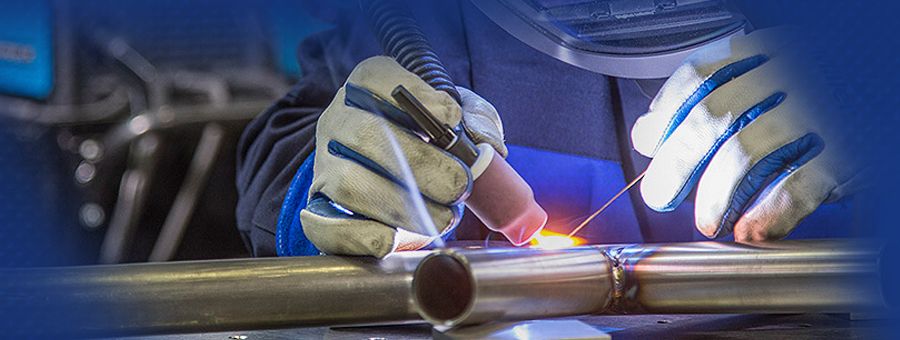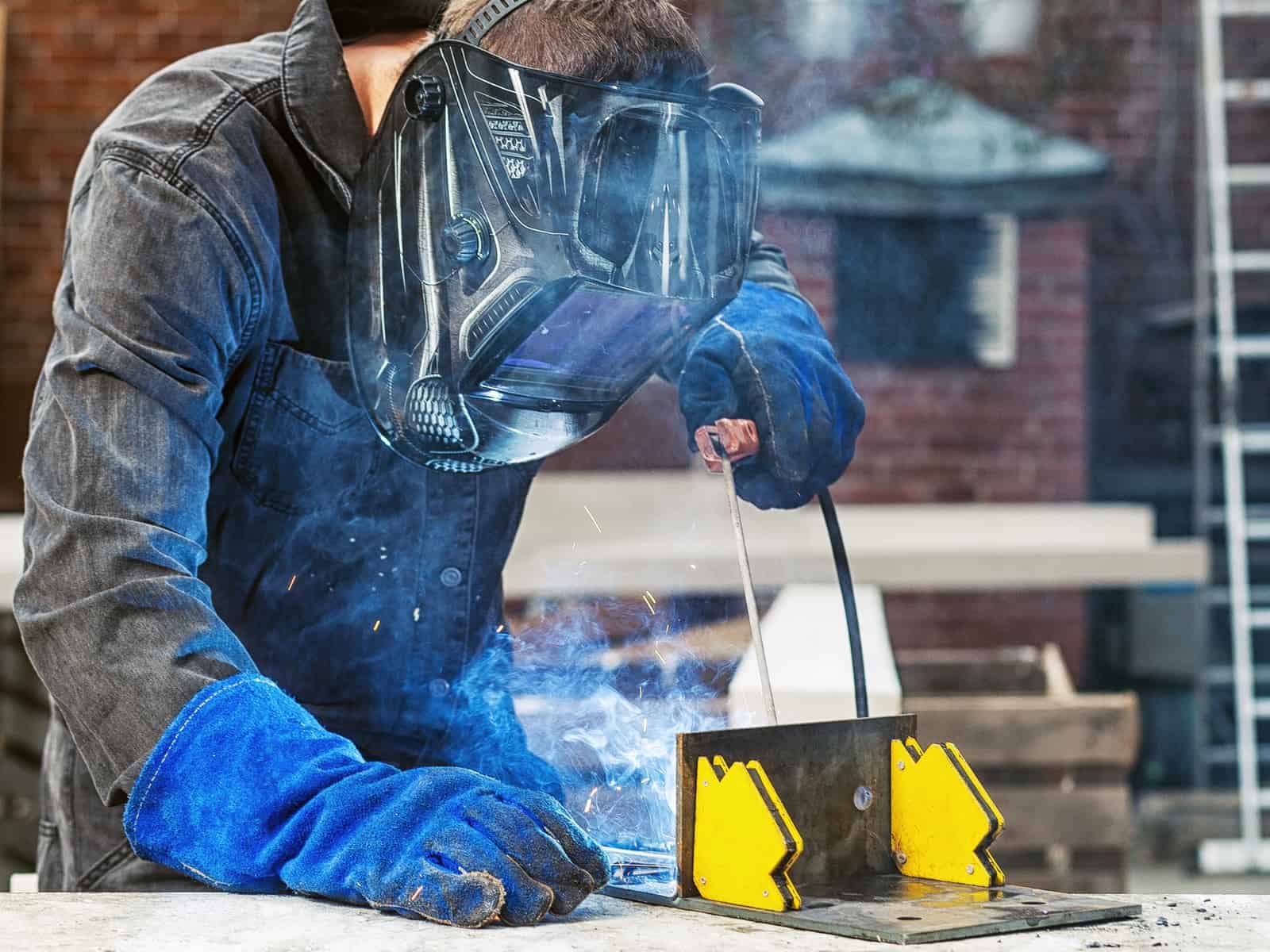Ways to detect and fix weld flaws in Montana Mobile Welding and Repair Belgrade Welding
Common Welding Fixing Issues and Just How to Address Them Efficiently
Welding repairs frequently run into a series of problems that can jeopardize the stability of the end product. Typical issues include poor penetration, porosity, and misalignment, to name a few. Each problem provides distinct difficulties that require specific strategies for resolution. Recognizing these problems is vital for welders intending to improve their abilities and outcomes. This discussion will certainly discover these common welding repair service problems and efficient methods to resolve them.
Poor Penetration
Insufficient penetration occurs when the weld metal falls short to fully fuse with the base product, causing weak joints and potential structural failings. This issue usually stems from inadequate heat input, wrong electrode angle, or incorrect welding speed. Welders may encounter insufficient penetration because of a miscalculation of the needed specifications for a certain material density or kind. Additionally, contamination on the base material's surface area can impede reliable bonding, aggravating the issue. To address insufficient penetration, welders must guarantee appropriate setups on their devices and maintain a clean job surface. Routine inspection of welds is suggested to identify any type of deficiencies early, permitting prompt corrections and the prevention of endangered structural stability in welded settings up.
Porosity
Porosity is a common issue in bonded joints that materializes as tiny gas bubbles caught within the weld metal. This flaw can endanger the honesty of the weld, resulting in minimized strength and prospective failing under anxiety. Belgrade Welding. Porosity generally emerges from contamination, dampness, or inappropriate welding strategies, which permit gases to run away into the molten weld swimming pool. To deal with porosity, welders need to ensure appropriate surface area prep work, preserve a clean working setting, and utilize suitable welding criteria. Additionally, selecting the right filler product and securing gas can mitigate gas entrapment. Regular assessment and testing of welds can assist identify porosity early, guaranteeing prompt corrective activities are taken, therefore preserving the top quality and integrity of the bonded framework
Misalignment
Imbalance in welding can emerge from various variables, including incorrect setup and thermal growth. Comprehending the origin causes is vital for reliable resolution. Several modification strategies are readily available to realign components and assure architectural integrity.
Sources of Misalignment
Welding imbalance commonly originates from a selection of underlying issues that can jeopardize structural stability. One key cause is improper fit-up of elements prior to welding, which can cause voids and uneven surfaces. Variants in thermal growth during the welding procedure can likewise lead to distortion, particularly if the materials being joined have various coefficients of expansion. Furthermore, insufficient clamping and fixturing might fail to hold elements safely in place, causing movement throughout welding. Inadequately kept equipment, including welding makers and tools, might introduce inconsistencies in the weld bead, further contributing to misalignment. Operator mistake, stemming from insufficient training or experience, can likewise play a considerable duty in creating misaligned welds.

Improvement Strategies Readily Available
Resolving imbalance efficiently needs a mix of restorative techniques customized to the certain problems available. One usual approach is the usage of jigs or fixtures to hold elements in the correct position during welding, making sure constant alignment. In addition, pre-heating the products can help in reducing distortion and improve fit-up. For considerable imbalance, mechanical realignment techniques, such as utilizing hydraulic jacks or clamps, can be used to deal with the placement prior to welding. Post-weld warm treatment might additionally be necessary to soothe stress and anxieties brought on by imbalance. Careful assessment and change throughout the setup phase can avoid imbalance concerns from coming to be considerable troubles, promoting a smoother welding procedure and boosting overall structural stability.
Distortion
Distortion is a common challenge in welding that can occur from various aspects, including irregular heating & cooling. Recognizing the root causes of distortion is crucial for applying reliable avoidance methods. Addressing this problem not just enhances structural honesty but likewise boosts the total quality of the weld.
Root causes of Distortion
When based on the extreme warm of welding, products commonly undertake changes that can result in distortion. This phenomenon mostly emerges from thermal growth and tightening throughout the welding process. As the weld area heats up, the material expands; upon air conditioning, it acquires, which can create inner stresses. In addition, uneven home heating across a work surface can exacerbate these stress and anxieties, leading to warping or flexing. The kind of material also plays a substantial role; metals with varying thermal conductivity and coefficients of expansion may react in a different way, bring about unforeseeable distortions. Bad joint design and poor fixturing can contribute to misalignment throughout welding, enhancing the likelihood of distortion. Understanding these reasons is essential for reliable welding repair work and prevention approaches.
Prevention Techniques
Effective prevention techniques for distortion throughout welding concentrate on managing warmth input and guaranteeing proper joint layout. Keeping a consistent heat input aids to decrease thermal growth and tightening, which can bring about distortion. Using methods such as pre-heating the workpiece can additionally decrease the temperature level slope, advertising uniform heating. In addition, selecting appropriate joint layouts, such as T-joints or lap joints, can boost stability and lower stress concentrations. Implementing appropriate fixturing to secure the workpieces in position even more aids in preserving alignment during the welding process. Staggered welding sequences can distribute warm much more equally, preventing local distortion. By using these strategies, welders can considerably lower the likelihood of distortion and improve the general top quality of their welds.
Fracturing
Fracturing is a typical issue come across in welding repair services, often arising from different factors such as improper cooling rates, material choice, or poor joint prep work. The incident of cracks can considerably jeopardize the integrity of the weld, causing prospective failures during operation. To resolve this concern, welders have to first assess the source, making sure that materials are suitable and properly selected for the certain application. In addition, controlling the air conditioning rate throughout the welding procedure is vital; fast cooling can induce stress and anxiety and lead to splitting. Appropriate joint style and prep work also add to reducing the threat. Implementing these strategies can improve weld quality and longevity, inevitably lowering the possibility of fracturing in finished weldments.

Insufficient Fusion
A considerable problem in welding repairs is incomplete blend, which happens when the weld metal does not adequately bond with the base product or previous weld passes - Montana Mobile Welding and Repair Belgrade Fabrication. This problem can bring about weaknesses in the joint, potentially jeopardizing the stability of the bonded structure. Variables adding to incomplete combination include insufficient warmth input, improper welding strategy, and contamination of the surface areas being joined. To address this concern effectively, welders should assure proper pre-weld cleaning and surface area preparation, in addition to readjust their welding parameters to attain appropriate penetration and blend. Normal assessment during the welding process can also help identify incomplete combination early, enabling for timely restorative actions to improve the overall top quality of the weld
Overheating
While welding repair work can boost structural honesty, overheating presents a substantial obstacle that can result in product destruction. Excessive heat during welding can change the mechanical buildings of steels, causing reduced toughness, raised brittleness, and bending. This sensation is especially essential in high-stress applications where architectural reliability is critical. Determining overheating can include visual assessments for discoloration or distortion, along with checking temperature throughout the click here to find out more welding procedure. To mitigate the risks connected with getting too hot, welders should employ ideal methods, such as regulating warmth input, changing travel rate, and utilizing suitable filler materials. Furthermore, carrying out pre- and post-weld warmth treatments can assist restore material residential or commercial properties and enhance the general top quality of the repair service, making sure lasting efficiency and security.
Often Asked Questions
What Are the Usual Signs of a Welding Defect?

Exactly How Can I Examine My Welds for High quality?
To check welds for quality, one can utilize visual assessments, ultrasonic testing, and radiographic techniques. Each method assures architectural stability, determines issues, and verifies adherence to defined requirements, inevitably enhancing the dependability of the welded joints.
What Safety and security Precautions Should I Take While Welding?
When welding, one must focus on security by putting on appropriate personal protective equipment, ensuring proper ventilation, safeguarding flammable products away, keeping a clean work area, and understanding surroundings to avoid accidents and injuries.
Can I Fix a Weld Without Remodeling the Entire Joint?
Repairing a weld without redesigning the entire joint is possible, relying on the damage (Belgrade Fabrication). Techniques such as grinding, including filler product, or utilizing a welding process can successfully resolve particular imperfections while preserving the bordering framework
What Tools Are Essential for Reliable Welding Services?
Necessary tools for reliable welding repairs consist of a welding maker, wire brush, mill, Learn More protective equipment, clamps, and filler materials. Each device plays a vital function in making certain top quality and security during the repair procedure. Porosity usually occurs from contamination, dampness, or improper welding methods, which allow gases to get away right into the molten weld swimming pool. Poorly conserved equipment, consisting of welding equipments and devices, might present incongruities in the weld grain, additional adding to imbalance. When subjected to the intense warmth of welding, materials commonly undertake changes that can lead to distortion. Fracturing is a common issue experienced in welding repairs, often resulting from various factors such as incorrect cooling prices, material selection, or insufficient joint prep work. A substantial issue in welding repair work is incomplete blend, which occurs when the weld metal does not flux core welding wire properly bond with the base material or previous weld passes.